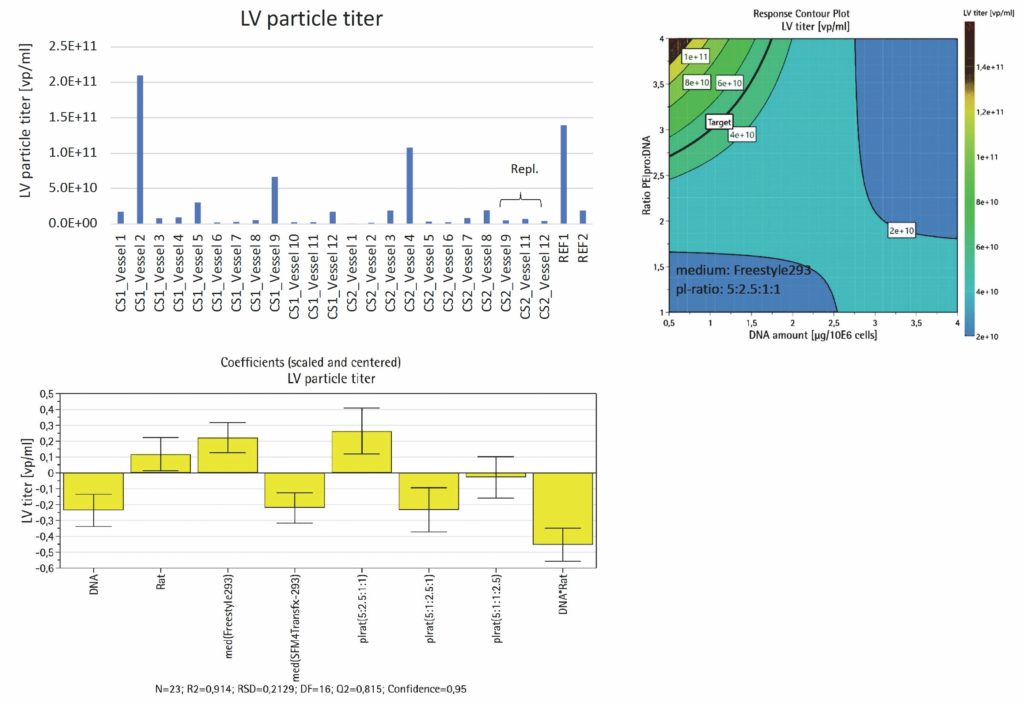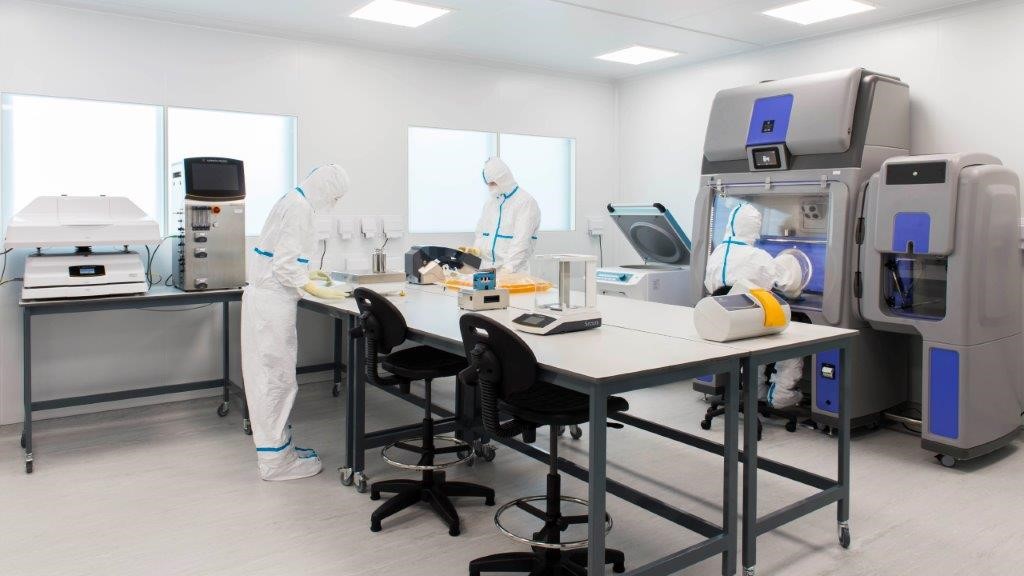According to the Pharmaceutical Research and Manufacturers of America (PhRMA),
some 362 cell and gene therapies are now in clinical development in the United States, up from 289 in 2018.1 Although there are many applications, cancer therapy modalities such as chimeric antigen receptor (CAR) T cells are leading the way, accounting for 173 of those trials. Despite this surge of pipeline activity, many logistical and technological challenges remain. In particular, the field needs strategies to reliably, safely, and cost-effectively scale cell and gene therapy manufacturing from small clinical trials to large-scale commercial production.
At the heart of this challenge are the viral vectors. Adenoviruses, adeno-associated viruses, and retroviruses—including lentiviruses—are all highly effective delivery systems. For lentiviral vector (LV) production, adherent HEK293T cell lines are a popular choice—though they rely on static flask cultures and are difficult to scale. To produce LVs in larger volumes, adherent 2D cultures need to be adapted to a 3D suspension–based process. This, in turn, allows for cultivation in larger rocking-motion and stirred-tank bioreactors.
Optimization of HEK293T suspension culture
As a proof-of-concept study, we sought to establish a working protocol for the cultivation of suspension-adapted HEK293T cells and the subsequent production of CD19-CAR LVs in a small-scale, stirred-tank bioreactor. As a 10–15-mL screening bioreactor, the Ambr® 15 mimics the features and process control variables (such as pH, dissolved oxygen, temperature, and stirring rate) provided by large-volume bioreactors. Importantly, it can screen many parameters in parallel, streamlining process development and facilitating a
smart, fast DoE (design of experiment) approach.
Our goal was to rapidly identify optimal process conditions for suspension-adapted HEK293T cultivation and LV production. We then sought to confirm the feasibility of upscaling the optimized process to a larger, stirred bioreactor, the Ambr® 250 modular system.
DoE studies
DoE studies are a rational and cost-effective approach to practical experimentation. They allow the effects of different variables to be assessed in parallel, conserving precious resources and time. In this example, our aim was to identify optimal culture and transfection conditions for LV production, tapping into Sartorius’s MODDE® software for experimental planning and analysis of results.
After obtaining the LV titer for all culture vessels (measured using a commercially available ELISA assay), we analyzed the DoE model of this screening experiment with the MODDE software. We were able to identify several critical process parameters (CPPs) that either do or do not have a significant effect on LV titer during the production process. Ultimately, with just one cultivation run, we identified factors that have a strong impact on LV titer and established an optimal set point.
Optimized LV production parameters
Our study showed that the Ambr 15 microbioreactor can be used as a scale-down
model for process development and effective media optimization. Crucially, it achieved this
in less time and with reduced reagent use and manual oversight. When used with DoE software MODDE, it enabled rapid, high-throughput process improvement and optimization.
Two critical factors emerged as important contributors to LV titer: stirring speed and
culture pH (Figure 1). Broadly speaking, higher pH values and stirring speeds yielded improved cell growth. However, these factors negatively correlated with LV titer, as seen in the DoE model. Based on our findings, we identified an optimal set point of 600 rpm stirring speed and a culture pH of 6.9 to 7.1.

With this insight, we were able to clearly identify optimal culture conditions for LV production in the Ambr 15 microbioreactor. When in place, the cells generally grew better than they did in the control shake flask culture and yielded a higher LV titer.
In a follow-up study, we attempted to optimize the transient transfection protocol to obtain the highest possible, most robust LV titer with a DoE approach. We optimized the viral production medium, the DNA amount, the ratio of transfection reagent to DNA, and the ratio of the four plasmids. We were able to identify several factors that significantly contribute to increased LV titers (Figure 2).

For example, the ratio of the amount of PEIpro to DNA, the usage of Freestyle 293 medium, and the plasmid ratio of 5:2.5:1:1 (GOI:gag-pol:VSV-G:rev) positively correlated with LV titer. Conversely, the amount of DNA, the usage of SFM4Transfx 293 medium, and a plasmid ratio of 5:1:2.5:1 negatively correlated with LV viral titer. Furthermore, when
comparing the highest LV titer obtained in the transfection optimization experiment and the first optimization run, we saw another 20-fold increase in LV titer through optimizing the transfection protocol.
Upscaling the optimized transfection protocol
With the optimized transient transfection process and cultivation parameters, we next tested the feasibility of upscaling LV production to a larger stirred bioreactor—the Ambr 250 modular. We used the parallel processing capabilities of the Ambr 250 modular to
determine the optimal gassing and stirring strategy.
The results show that the production of LVs is directly scalable from the Ambr 15 microbioreactor system to larger stirred bioreactor systems with comparable vector yield. We were able to obtain an LV titer that was identical to the best conditions for LV production with the Ambr 15 (2.1 × 1011 vp/mL). The results also demonstrate that the gas flow rate and stir direction of the impellers have a significant effect on the LV titer (Figure 3). Of note, the highest LV titer was obtained with the lowest gas flow rate
and a downward stir direction of the impellers. The differences caused by the varying flow rates and stir directions can also be seen in the differences between the fold-expansions of the cells during LV production.

Real-world impact
For many years, small-scale LV production was sufficient to keep cell and gene therapy
programs moving forward. However, as more and more therapies approach commercialization, more efficient bioprocessing is needed. Adherent cultures can scale out, but they cannot scale up. Thus, the path forward will require suspension-based cultivation and high-throughput tools for process development, such as Ambr 15.
These studies demonstrate that the transition from shake flask to a scalable stirred bioreactor system can be accomplished quickly and efficiently. With the Ambr 15 system in
combination with the DoE software MODDE, a systematic investigation of critical process
parameters can be done to achieve rapid, parallel process improvement and optimization.
Importantly, this study demonstrated not only the optimization of cultivation parameters
but also the optimization of the transfection process itself, driving a significant improvement in LV titer. Given the costs and timelines associated with transient transfection, efficiencies in the methodology and experimental parameters will go a long way to ensuring the commercial success of the eventual therapy.
Reference
1. PhRMA. Medicines in Development for Cell and Gene Therapy: 2020 Report
Franziska Bollman, PhD ([email protected]), is a process technology consultant for viral-based therapeutics at Sartorius.



